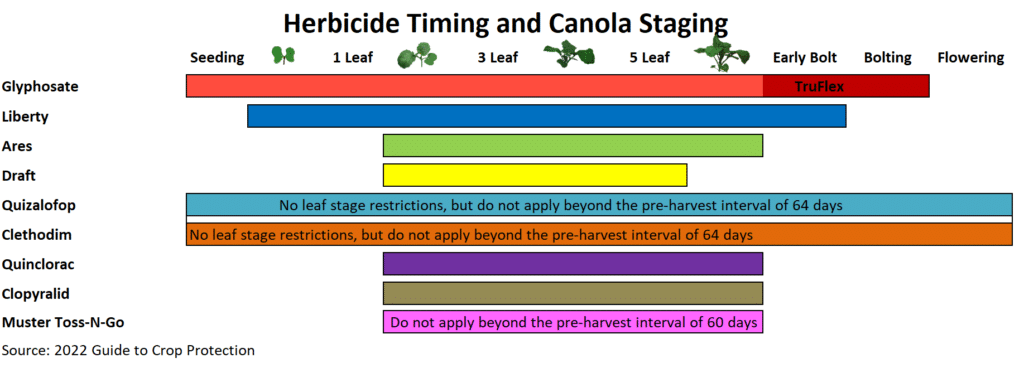Insect update: cabbage seedpod weevil
Cabbage seedpod weevils, strongly attracted to yellow flowers, are already over threshold within some early fields in areas accustomed to spraying for this pest. Though adult weevils will feed on buds, economic losses are caused almost entirely when the weevil larvae feed on developing seeds. The critical control stage is 10 to 20% bloom; egg laying can’t start until the first pod is about ½” long. Spraying before 10% bloom gives weevils time to re-infest the crop, which is costly if a second pass is required and potentially detrimental as most insecticides have specific repetitive use restrictions. (CSPW – when to spray)
Watch also for grasshoppers, especially in the Peace. (Alberta grasshopper forecast 2022) (Canola insect scouting guide)
Prioritize predicting sclerotinia
Sclerotinia stem rot is the most economically significant disease impacting Canadian canola fields. Moisture makes sclerotinia. Because the vulnerable flowering window passes quickly, plan ahead by understanding the risk factors and having fungicide at-the-ready. Even very late-seeded crops, which will advance quickly in warm weather, will soon be at risk. Want a better sclerotinia prediction tool? The CCC and AAFC are looking for additional volunteers to beta-test a sclerotinia risk assessment tool that compares early flower risk to sclerotinia severity at maturity. Email for more information or to sign up. Refer to the Canola disease scouting guide for more on all key canola diseases.
Still planning an in-season herbicide?
A difficult start to the season means weed control is still on the to-do list for many. Always follow label recommendations for rates and timing in-season to avoid crop injury and stay within MRLs. In fields where a first pass was effective, a second pass will be largely cosmetic. In fields where a first pass hasn’t yet been applied or achieved poor control, make sure late-applied herbicide is as effective as possible by scouting weeds, optimizing water volume and other controllable factors, adding a targeted tank mix partner, and applying ASAP. Depending on the crop’s stage and the primary weed species, it may prove beneficial to consider pre-harvest control rather than an in-crop rescue treatment. (Late-window applications of herbicide) (Weed management – timing) (Keeping it Clean: Always read and follow the label)

How is that crop looking?
With the seeding and reseeding window now closed, the crop is officially in. Now is the time to finish assessing crop emergence and variability with help from CanolaCounts.ca. Complete and submit counts by July 1st so data can be included in the CCC’s emergence map.
Worried about a less-than-pretty crop? Maximize what is there by managing weeds, scouting regularly, and preparing early for pests and disease. Though emergence issues are rarely caused by seed quality, talk to the seed rep and submit a seed sample for testing if no other cause of a weak crop can be determined. Post-frost or hail, the only option is to wait and see.
